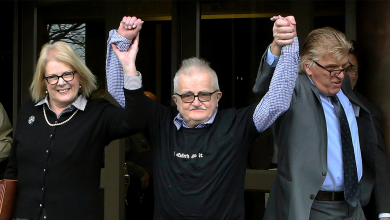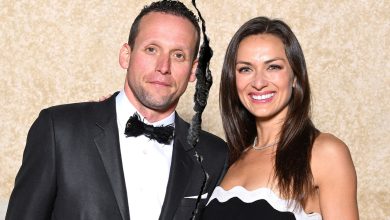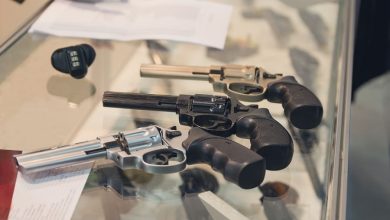This article originally appeared in RECOIL Issue 42. Photos by Dave Merrill
Editorial Forward: Dr. Phil Dater passed on January 20, 2025. He is fondly remembered, and I am honored to have known him. In this piece you’ll get a glimpse of why he was so highly regarded, and we should all be so lucky to live such a full life. -DM
No End in Sight: The Many Careers of Dr. Phil Dater, MD
If you own, use, or enjoy modern silencers, there’s one man you have to thank for the privilege and that’s Dr. Phil Dater. Though suppressors have been around far longer than Dater, his designs and DNA can be found across the industry and the globe.
But being the father of modern silencers wasn’t Dater’s life goal. Silencers weren’t even on his radar until he was well into his 40s. His love for tinkering and learning, and distaste for sitting around, put him on a journey to pave the way for practically every modern silencer company we all know.
Dater was born in New York City and spent most of his youth there. He moved to Kansas as a teenager and graduated high school in Wichita. Dater went on to study engineering at the University of Kansas. To put himself through school, he worked for the Coleman lantern company. Eventually, Dater had a change of heart and pursued medicine. He finished medical school in New Orleans. Then, he joined the Air Force in 1965 as a physician. In a hospital basement, Dater began next and, to us, his most important career journey, shaping the way we enjoy and employ silencers in the 21st century.
We sat down with Dater at his home and then in his mad scientist workshop just outside of Boise. Though he’s getting up in age, Dater’s no slouch, as you’ll soon see.
RECOIL: Tell us about your time in the service.
PHD: Well, in 1965, I had finished medical school and was in the rotating internship at the time; halfway through one of the other interns got his draft notice. At the same time, I was notified to get the induction physical. I would have preferred not to have the full physical, as I could have done without the finger up my ass. I didn’t want to be drafted into the Army or Marine Corps, since I had no interest in going overseas. I reached out to both the Navy and the Air Force, and the Air Force called me back first.
So you went into the Air Force as a physician?
PHD: I did. I wanted to be stationed in southwest America, so they gave me Roswell, New Mexico, as a general medical officer assigned to pediatrics with the rank of captain. After two years in the Air Force, I took formal pediatric specialty training. I lost my son during that time and found that treating children became too difficult. Radiology then became my calling. I stayed in radiology for over 20 years, first with a large multi-specialty group in Albuquerque, New Mexico, and subsequently as a circuit doctor traveling to a few different rural New Mexico hospitals.
As the story goes, it was in the basement of a hospital that you began to dabble in silencers?
PHD: Correct. When I was on call, I had to be physically at the hospital so instead of sitting around doing nothing, I worked in the hospital’s small machine shop in the basement. I had learned how to operate lathes and mills at the Coleman Company during college summers. I could repair lanterns and stoves in my sleep. I had always had an interest in firearms and silencers, so that is where I started playing with them on the mechanical level.
What made you start to design silencers?
PHD: I didn’t begin with designs of my own. I had purchased a Ruger MKI pistol modified by Military Armament Corporation with an integral suppressor. After about 500 rounds, it was no longer quiet, and MAC told me it couldn’t be rebuilt. Their suppressor consisted of a lot of barrel holes with screen disks and a wipe assembly. I figured out how to disassemble the suppressor and replaced the screen washers with Chore Boy copper scouring pads and a non-wipe front end cap. I wanted to make it better, and knew that I would be able to. After that, making firearms quieter became a source of challenge and fun for me.
At what point did you begin making your own complete silencers?
PHD: In the late ’70s, I played with integral designs for pistols like Rugers and Hi-Standards, but they were not for large-scale production; few silencers were back then. Initially, I would make small batches with a friend with a license who would then sell them. From these rimfire designs came larger calibers like submachine gun silencers and rifle cans.
What has been your favorite weapon to suppress?
PHD: Without a doubt, the Ruger 77/22 is my favorite firearm; I have always preferred bolt actions for their accuracy. I currently own four or five. Some have integral suppressors, but not all. I very much appreciate the 17 HMR cartridge for varmints and plinking. It is my favorite round and an absolute joy to shoot.
What was your first firearm purchase?
PHD: I bought a 9mm Luger from a hardware store in Exeter, New Hampshire. I was 13 years old and paid $25 for it.
Do you still have it? Do you shoot it anymore?
PHD: Of course, but I haven’t shot it in at least 40 years.
Why did you decide to settle in Boise, Idaho?
PHD: In the early ’90s, Medicare had made me dislike practicing medicine, so I left and moved to Boise. I figured we would retire at that point. I took out an ad in Machine Gun News to be a third-party sound measurement tester.
How did that work out for you?
PHD: I was quickly contacted by a fellow named Jim Ryan of JR Customs in Washington. He and another gentleman by the name of Mark Weiss were developing a co-axial designed 9mm submachine gun suppressor similar to my MK-9K and wanted sound testing performed. It was the start of a very good partnership. We began collaborating on silencer designs and formed Gemtech in 1993. Contrary to some press out nowadays, Jim Ryan was the true designer of the Gemtech Aurora.
That’s still a popular silencer. What are your thoughts on wipes as a silencer part?
PHD: It doesn’t matter what I think about the ATF ruling on them, but as a piece of a silencer, they can be very effective when employed properly.
Who in the current silencer industry is doing things right?
PHD: Griffin Armament does a great job at production. They make some excellent silencers from the samples I have had the chance to test. I would say a close second is Dead Air; they are true silencer people with a skill in marketing. Lastly, I have always been impressed with Elite Iron. You don’t hear much about them, but I think their cans are some of the most rugged built today, particularly their 50-caliber silencer.

I recall that you have a Serbu 50 in your collection.
PHD: Mark Serbu and I are good friends from way back. I had the pleasure of going on a prairie dog hunt with him in Wyoming many years ago. We had a long drive together, and there I learned a great deal about weapon systems and material strengths. He knew an immense amount about weapon mechanics. We killed so many critters on that hunt. We shot a lot from the rental car. I doubt we got our deposit back, because we couldn’t vacuum all the empty brass out of the defroster vents.
Who else in the industry has had an influence on you over the years?
PHD: Dan Shea, of Small Arms Review and Small Arms Defense Journal, is one of my closest friends. We have traveled the world together many times. We have been able to go to the pattern room in the United Kingdom to study and photograph classic weapons like the SOE Welrod. We were even caught in the middle of a coup d’état in Thailand together. We met at a trade show somewhere at least 25 years ago. Doug Olson was also a hero of mine in the industry. He really helped me understand that silencer design was almost always trial and error. And Richard Feynman for his ability to make complex theory sound simple.
Much like Hiram P. Maxim, you also enjoy HAM radio, correct?
PHD: I was obsessed with HAM radio while I was in New Mexico. Almost every moment I wasn’t working I would be found on a mountaintop setting up a repeater or helping organize the local HAM community. It became a problem after a while. Like kids these days with their cell phones, I couldn’t get enough of the radios. I had to step back when it really started to interfere with my home life. I still have radios, but am not nearly as involved. I don’t even like to use my cell phone, so I keep it in the car where it belongs. And don’t even get me started on these new smartphones.
What are some of your other hobbies besides silencers and firearms?
PHD: I have always had a passion for the ballet — believe it or not. I took on some walk-on (non-dancing) parts in a few performances, like being the grandfather in the Nutcracker. I found that the movements in ballet were very closely related to another passion of mine, skiing. I skied for many years until bad knees made me stop a few years ago.
You also enjoy trains and the rail system?
PHD: Driving in southern Colorado in 1971, I came across a live steam engine that was running. It was right outside of Antonito, Colorado, and it was a narrow-gauge engine, 3-foot gauge. It had been owned by the Denver Rio Grande and acquired by the historical societies of the states of Colorado and New Mexico for preservation. They offered rides, so I took a ride and rode over to Chama, New Mexico, and back. It was about 64 miles, each way, and this made me very interested in the railroad because the people who were working there were all volunteers. So I ended up becoming a volunteer. Denver and Rio Grande had run that as a revenue lineup until 1968. The narrow gauge was used in the mountains for how easy it was and cheaper for the tight corners of the mountain passes. The standard gauge was simply too large. Many of the tracks in southern Colorado at the time were three-rail, allowing mixed-gauge trains. In 1968, they abandoned the line and the two states, New Mexico and Colorado, joined together and bought the line because it was such a scenic area. They ran it the first eight or 10 years with volunteers. I would go up on weekends and volunteer on the train as a historian, or we would work painting or restoring equipment in the yard. We also got to go out on little speeder cars and paint mileposts. It was really a lot of fun for me. I became interested in model trains about the same time. Of course, with a narrow-gauge focus. Jane and I still go to model train conventions. I am thinking of repurposing my shop for model trains.
You did some work with the California crime lab at one point. What did that entail?
PHD: In 2009, the California Criminalistics Institute contacted me to teach a class on silencers. The new examiners would be put through training on various weapon systems, and the program wanted this to also include silencers. I put together a three-day class that included silencer designs both professional and crude, historical silencers and inventors, and, of course, a day of testing silencers at the range. The Crime Lab would bring out confiscated homemade silencers. We would test them to see how they did. It was here that we made and tested several “field expedient” silencers such as potatoes, baby bottle nipples, pillows, tennis balls, and, of course, plastic bottles. Each of them serialized then promptly destroyed. I have the videos of all these somewhere. It was interesting to see how well some of them worked and how some of them actually made the various guns louder.
You have also worked with tons of companies in the industry over the years. Any of them stand out?
PHD: We worked with FN when the P90 was initially being imported. They wanted a silencer that didn’t change how the weapon functioned at all. They clearly didn’t know much about silencers. They believed what they had was perfect and any modification would degrade the product. We created a silencer called the SP-90 that eventually was sold to the secret service.
What do you do with your time now?
PHD: Right now, I am involved with Maxim Defense. They just released the PDX, and I helped with high-speed video to check bullet stability, flash, and weapon functioning. I enjoy getting out of the house and working with those guys; it really is a great group of people. I also do some consulting and sound testing for silencer companies and occasionally write articles for Small Arms Review.
Philip H. Dater
Born: 1937 in Manhattan, NY
Family: Married, three daughters
Education: University of Kansas, University of Wichita, McNeese State College in Louisiana
Medical School: Tulane University, New Orleans, LA
Military ServiceU.S. Air Force, 1965-1967
Role models: Doug Olson, Wyatt Earp
Favorite film: Second Hand Lions
Daily driver: Audi A4
Favorite silencer: The Gemtech Outback-IID
Favorite gun: Ruger 77/17
Read the full article here





